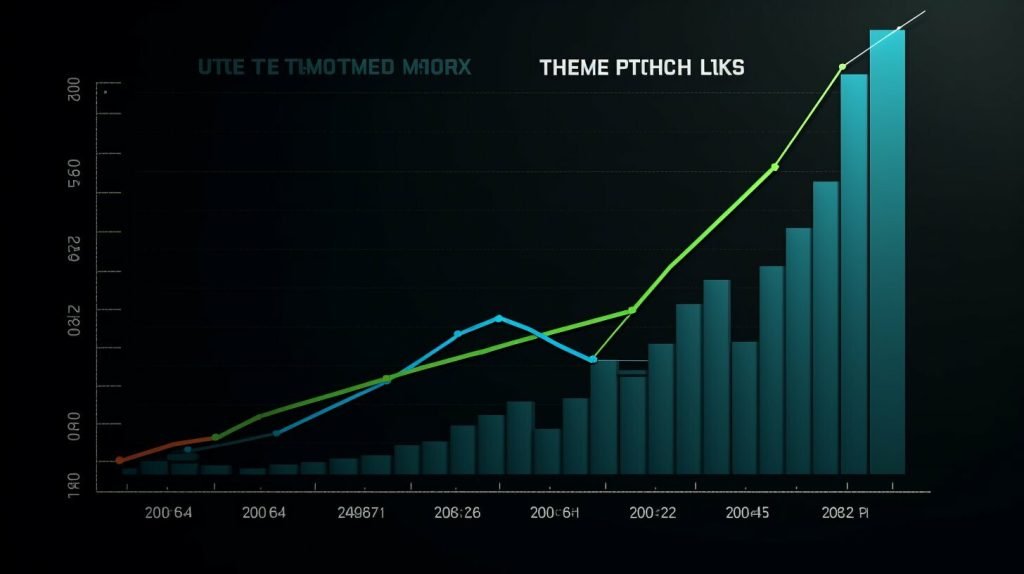Promotional strategies, content creation, and content distribution are crucial components of any successful marketing campaign. Effective promotion requires a well-planned strategy that encompasses a range of marketing techniques and advertising tactics. Content creation plays a vital role in building brand awareness and attracting potential customers while content distribution helps businesses to maximize their reach and engagement across multiple channels.
Key Takeaways:
- Promotional strategies, content creation, and content distribution are critical to successful marketing campaigns.
- A well-planned promotional strategy should incorporate a variety of marketing techniques and advertising tactics.
- Content creation is essential to building brand awareness and attracting potential customers.
- Content distribution helps businesses to maximize their reach and engagement across multiple channels.
Understanding Promotional Strategies
Promotional strategies are marketing techniques and advertising tactics used to drive brand promotion. By creating awareness and interest in a particular product or service, businesses can influence consumer behavior and increase sales.
There are several types of promotional strategies, including:
| Type of Promotional Strategy | Description |
|---|---|
| Advertising | Paid promotion of products or services through various media channels, such as television, radio, print, and digital ads. |
| Sales promotion | Offering incentives, such as discounts, coupons, or contests, to encourage consumer purchases. |
| Personal selling | Direct face-to-face communication between a salesperson and a potential customer, aimed at persuading them to buy a product or service. |
| Public relations | Building and maintaining relationships with the public and creating a positive image of the brand through media coverage, events, and sponsorships. |
Effective promotional strategies involve a combination of these techniques to reach a wider audience and increase brand visibility. By understanding the significance of each promotional strategy, businesses can tailor their approach to better meet their marketing goals.

Importance of Content Creation
Content creation plays a crucial role in promoting a brand in today’s digital age. As consumers are increasingly turning to online channels for information and entertainment, businesses need to create engaging and valuable content to build brand awareness and establish themselves as thought leaders in their industry.
With so many brands vying for consumer attention, businesses need to ensure their content stands out from the crowd. This means creating content that is informative, entertaining or educational, and that resonates with their target audience. By doing so, businesses can establish themselves as a trusted source of information, and build long-term relationships with their customers.
Effective content creation requires a deep understanding of the target audience’s needs, interests and pain points. Businesses need to conduct thorough research to identify the topics and formats that will resonate with their audience. This may involve analyzing social media data, conducting surveys or focus groups, or using keyword research tools to identify trending topics.
Once businesses have a clear understanding of their target audience’s preferences, they can create content that aligns with their needs and interests. This may involve creating blog posts, articles, videos, infographics or other types of content that offer value to the audience. Content should be optimized for search engines to improve visibility and drive organic traffic to the website.
Effective content creation also involves maintaining a consistent brand voice and tone across all channels. This helps to establish brand recognition and build trust with the audience. By creating high-quality, valuable content that is aligned with the brand’s values and messaging, businesses can establish themselves as thought leaders in their industry, and build a loyal following of customers and fans.
Image source: 
Effective Content Distribution Channels
Content creation is just one part of the equation in digital marketing. Promoting the content effectively is equally important for driving brand awareness and engagement. In today’s digital age, businesses have access to a range of content distribution channels to reach their target audience. Here are some effective ones:
Social Media Platforms
Social media is one of the most popular and effective content distribution channels available today. It provides businesses with a platform to engage with their target audience directly and on a personal level. With over 3.6 billion social media users worldwide, social media promotion can significantly enhance brand reach and engagement.
Platforms like Facebook, Twitter, Instagram, and LinkedIn offer businesses an opportunity to share their content, interact with customers, and drive traffic to their website. Social media algorithms are becoming increasingly sophisticated, making it essential to identify the right platform and tailor content to fit the specific audience’s preferences and preferences. Videos, interactive content, and visual content tend to perform well on social media platforms.

Email Marketing
Email marketing is another effective content distribution channel that can produce impressive results. It involves sending promotional emails to a list of subscribers interested in the business’s products or services. Email marketing is inexpensive and can be highly targeted, allowing businesses to identify a specific audience and tailor their content to their needs and preferences.
Effective email marketing campaigns require businesses to create engaging content, eye-catching visuals, and personalized messages that resonate with the target audience. Leveraging email automation tools can help to streamline the process and save time while delivering the desired results.
Content Syndication
Content syndication is a content distribution strategy where businesses share their content on third-party websites, online communities, and industry-specific publications. It provides businesses with an opportunity to reach a wider audience and establish themselves as thought leaders in their industry.
However, it is essential to ensure that the content fits the publication’s tone and style and provides value to the target audience. Aim to share content on reputable platforms with a significant readership to maximize the impact of the content syndication strategy.
Overall, effective content distribution channels play a vital role in promoting a brand and driving engagement. Businesses should experiment with different channels and identify the ones that work best for their specific needs and target audience.
Leveraging Search Engine Optimization
Search engine optimization (SEO) is a crucial aspect of content creation and digital advertising. By optimizing content for search engines, businesses can improve their visibility and drive organic traffic. The following tips can help businesses maximize the benefits of SEO:
- Keyword research: Conduct thorough research to identify relevant keywords and phrases your target audience is searching for. Use these keywords strategically in your content to improve search rankings.
- Quality content: Search engines prioritize high-quality, valuable content. Create engaging and informative content that satisfies the user’s search intent.
- Meta descriptions: Craft compelling meta descriptions that accurately summarize your content and include relevant keywords.
- URL structure: Use a clear and concise URL structure that incorporates relevant keywords.
- Link building: Build high-quality inbound links from reputable sources to improve your site’s authority.
Implementing these strategies can help businesses improve their search engine rankings and drive more organic traffic to their website.

Image source: seowriting.ai
Maximizing Digital Advertising
Digital advertising has become an essential tool for businesses to maximize their promotional efforts. With the right strategy, businesses can reach a wider audience and drive more traffic to their website. Here are some tips to help businesses maximize their digital advertising:
Targeted Advertising
Targeted advertising is the process of identifying and reaching out to a specific group of people based on their demographics, interests, and behavior. This type of advertising can be done through social media platforms, search engines, and other digital channels. By targeting the right audience, businesses can increase the chances of converting leads into customers.
Compelling Ad Copy
The ad copy is the text that appears on an advertisement, and it should be compelling enough to catch the reader’s attention and persuade them to take action. It should be clear, concise, and relevant to the target audience. Including a strong call-to-action is also important to encourage the reader to take the desired action.
Effective Landing Pages
Landing pages are the pages that users land on after clicking on an online advertisement. Having an effective landing page is crucial to maximizing digital advertising. The landing page should be relevant to the ad, easy to navigate, and optimized for conversion. It should also have clear information about the product or service being offered and a strong call-to-action.
Utilizing Remarketing
Remarketing is a technique that involves targeting people who have previously interacted with a business online. By showing targeted ads to people who have already shown interest in a product or service, businesses can increase the chance of converting them into customers. Remarketing can be done through various platforms, including social media and Google Ads.

By implementing these strategies, businesses can maximize their digital advertising and reach a wider audience. It is essential to constantly evaluate and adjust the digital advertising strategy to ensure it is effective and achieves the desired results.
Measuring Promotion Success
Measuring the success of promotional strategies is essential to evaluate the effectiveness of marketing campaigns. Key performance indicators (KPIs) allow businesses to track and evaluate different aspects of their promotional efforts and adjust their strategies accordingly.
Some common KPIs include:
- Conversion rates: Refers to the percentage of website visitors who take a specific action, such as making a purchase or filling out a form. This metric helps businesses gauge the effectiveness of their website and landing page design.
- Engagement rates: Refers to the level of interaction users have with content on social media platforms. This metric helps businesses gauge the effectiveness of their social media promotion strategies.
- Return on investment (ROI): Measures the amount of revenue generated relative to the cost of the promotional campaign. This metric helps businesses determine the profitability of their promotional strategies.
- Website traffic: Refers to the number of visitors to a website. This metric helps businesses gauge the effectiveness of their organic and paid search engine optimization (SEO) efforts.
Analytics tools such as Google Analytics, SEMRush, and Ahrefs can provide businesses with valuable insights into their KPIs. By regularly monitoring and analyzing KPIs, businesses can refine their promotional strategies and improve their overall marketing performance.

Adaptability and Innovation in Promotion
In today’s rapidly evolving marketplace, adaptability and innovation are key components of successful promotional strategies. To stand out in a crowded field, businesses must be willing to experiment with new ideas and approaches to content creation and online marketing.
Stagnation is the enemy of progress, and remaining complacent in promotional efforts can quickly lead to diminishing returns. By embracing change and exploring new avenues for promoting their brand, businesses can stay ahead of the competition and continue to grow and evolve with their audience.
One effective way to adapt to changing promotional landscapes is to regularly analyze and evaluate the performance of existing content and marketing efforts. By identifying areas of weakness or opportunities for improvement, businesses can make informed decisions about where to focus their marketing resources.
Another important aspect of adaptability and innovation in promotion is staying up-to-date with emerging trends and technologies. For example, as social media platforms continue to evolve, businesses must adapt their content creation and distribution strategies to keep up with changing user behaviors and preferences.
Ultimately, successful promotional strategies are those that prioritize continuous improvement and experimentation. By remaining adaptable and innovative, businesses can keep their brand fresh and relevant in the eyes of their audience, fostering long-term growth and success.

Engaging with the Target Audience
Effective promotional strategies and content creation are meaningless without active engagement from the target audience. Engaging with the audience helps build brand loyalty, foster relationships, and increase conversions. However, with attention spans decreasing and the competition growing, businesses must employ creative and personalized approaches to capture and retain audience attention.
Personalization: Personalization is key to engaging with the target audience. People want to feel like they are being heard and seen by the brand. Including personalized recommendations, offers, and messages based on the audience’s interests, preferences, and behavior can go a long way in capturing and retaining their attention.
Storytelling: Storytelling is an effective content creation technique that can help engage the target audience. People connect with stories, and businesses can use this to their advantage by sharing relatable and memorable stories that align with their brand values and audience’s interests. Storytelling can be complemented with visual content, such as images and videos, to enhance engagement.
Interactive Content: Interactive content involves the audience and encourages participation, which can help increase engagement. Examples of interactive content include quizzes, polls, and surveys. Interactive content can help businesses gain insights into their audience’s preferences, opinions, and behavior, as well as foster a sense of community around their brand.

“Engaging with the target audience is critical to building brand loyalty and fostering relationships that translate to increased conversions.”
Maximizing Social Media Promotion
Social media has become an integral part of promotional strategies in recent years. With billions of active users, social media platforms provide vast opportunities to reach and engage with the target audience. However, it’s not just about having a social media presence – it’s about leveraging it effectively. Here are some tips on maximizing social media promotion:
Create Valuable Content
The key to success on social media is creating valuable content that resonates with your target audience. This can be achieved through a variety of formats such as videos, infographics, or blog posts. Content should be visually appealing, easy to consume, and provide value to the audience.
Be Consistent
Consistency is crucial when it comes to social media promotion. It’s important to post regularly and at the optimal times to ensure maximum visibility and engagement. Create a social media calendar to plan and schedule content in advance.
Leverage Influencer Marketing
Influencer marketing can be a powerful tool in expanding brand reach on social media. Partnering with influencers who align with your brand values and audience can help increase brand awareness and credibility.
Engage with the Audience
Social media provides a platform for direct engagement with the audience. Responding to comments and messages promptly, asking questions, and encouraging user-generated content can help create a sense of community and loyalty among the audience.

Image source: seowriting.ai
Conclusion
Effective promotional strategies, content creation and distribution are essential components of a successful marketing campaign. By understanding different promotional techniques and advertising tactics, brands can elevate their promotional efforts. Compelling content creation is crucial in building brand awareness and engaging with the target audience in online marketing. By leveraging various content distribution channels such as social media platforms, businesses can amplify their reach and increase brand exposure. Search engine optimization and digital advertising are also important tools for maximizing promotional efforts. Measuring promotion success through key metrics and analytics tools can help businesses evaluate their efforts and improve performance. Staying adaptable and innovative, engaging with the target audience, and utilizing the power of social media promotion and influencer marketing can contribute to effective promotional strategies.
How Can Branding and Design Help Boost Content Creation and Distribution in Promotional Strategies?
Branding and design play a crucial role in enhancing content creation and distribution in promotional strategies for business growth. A well-crafted brand identity helps businesses stand out from competitors, attract their target audience, and establish a strong online presence. Additionally, a visually appealing design can make content more engaging, ensuring better reach and brand recall. Integrating cohesive branding and design elements into promotional strategies can significantly maximize their effectiveness and impact.
FAQ
Q: What are promotional strategies?
A: Promotional strategies refer to the various techniques and tactics businesses use to promote their products or services. These strategies aim to increase brand visibility, attract customers, and ultimately drive sales.
Q: Why are promotional strategies important?
A: Promotional strategies are important because they help businesses establish a strong brand presence, differentiate themselves from competitors, and attract their target audience. Effective promotional strategies can lead to increased brand awareness, customer engagement, and revenue growth.
Q: What is the role of content creation in promotional strategies?
A: Content creation plays a crucial role in promotional strategies as it involves developing engaging and valuable content that resonates with the target audience. Well-crafted content helps businesses communicate their brand message effectively, build trust with customers, and drive engagement and conversion.
Q: How can businesses distribute their content effectively?
A: Businesses can distribute their content effectively through various channels, such as online marketing and social media promotion. These channels provide opportunities to reach a wide audience and engage with them through targeted content distribution strategies.
Q: What is search engine optimization (SEO) and how does it relate to promotional strategies?
A: Search engine optimization (SEO) refers to the process of optimizing website content to improve its visibility in search engine results. It is an important aspect of promotional strategies as it helps businesses increase organic traffic to their website, enhance brand visibility, and improve their search engine rankings.
Q: How can businesses maximize digital advertising in their promotional strategies?
A: Businesses can maximize digital advertising in their promotional strategies by leveraging various advertising platforms and tactics. This includes targeted ad campaigns, retargeting strategies, and ad optimization techniques to reach and engage with their target audience effectively.
Q: How can businesses measure the success of their promotional strategies?
A: Businesses can measure the success of their promotional strategies by tracking key performance indicators (KPIs) such as website traffic, conversion rates, social media engagement, and sales. Analytics tools and data analysis help businesses evaluate the impact of their promotional efforts and identify areas for improvement.
Q: Why is adaptability and innovation important in promotional strategies?
A: Adaptability and innovation are important in promotional strategies because the marketing landscape is constantly evolving. By staying adaptable and embracing new trends and technologies, businesses can remain competitive, better connect with their audience, and continuously improve their promotional efforts.
Q: How can businesses engage with their target audience through promotional strategies?
A: Businesses can engage with their target audience through promotional strategies by personalizing their content, incorporating storytelling techniques, and creating interactive experiences. These approaches help businesses forge stronger connections with their audience and foster long-term relationships.
Q: How can social media be leveraged for promotion?
A: Social media platforms can be leveraged for promotion by creating targeted content that resonates with specific audiences on each platform. Businesses can also utilize influencer marketing to leverage the reach and influence of popular social media users to promote their brand and products.

